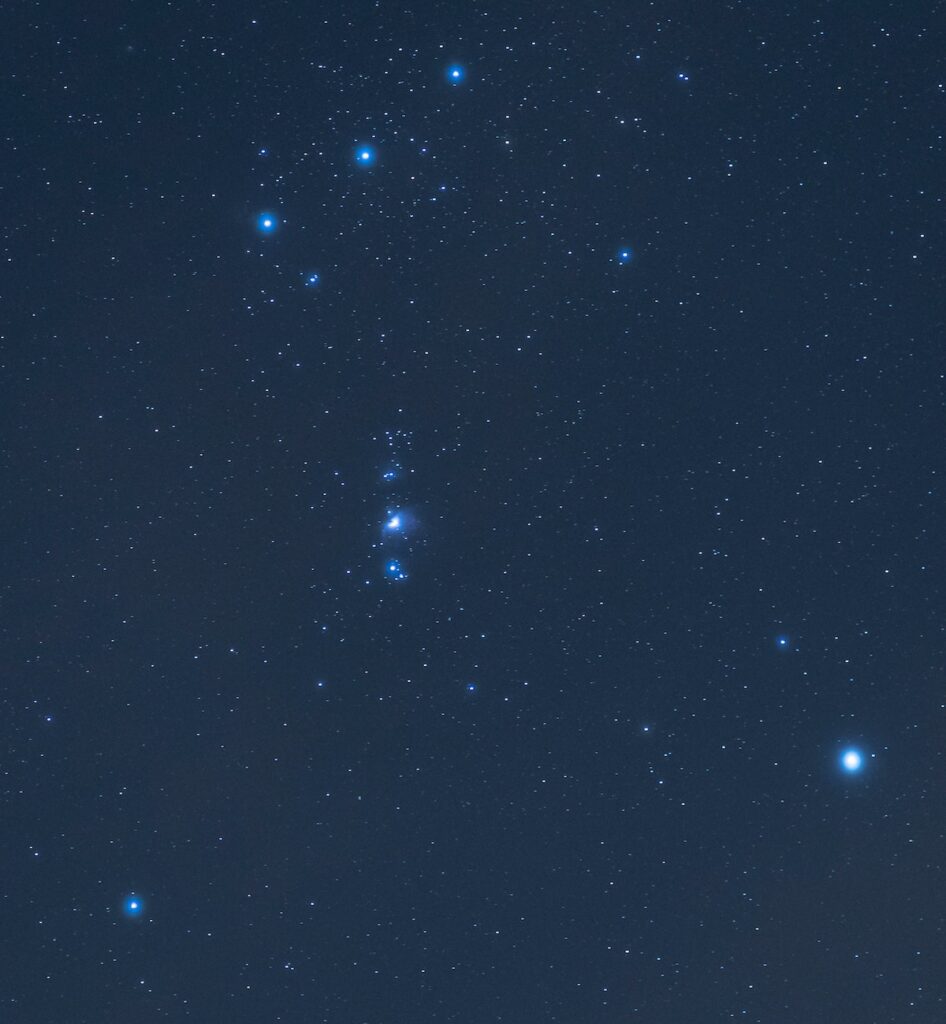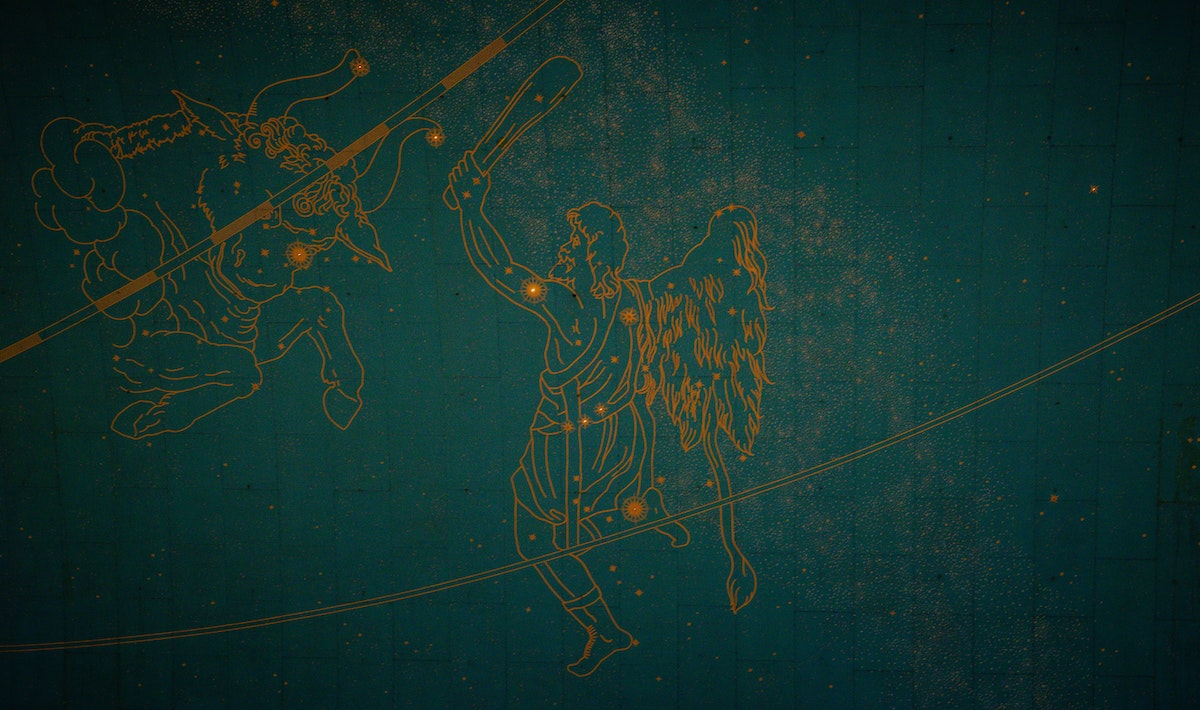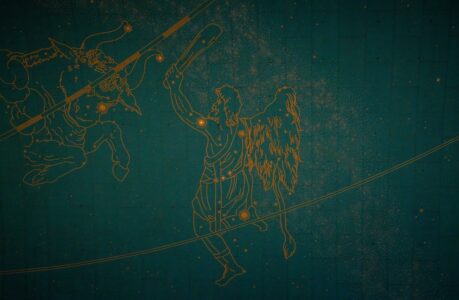From Ireland, some of the constellations that are visible include Orion, Taurus, Cassiopeia, Ursa Major (which includes the Big Dipper), Ursa Minor (which includes the North Star), and Gemini. The visibility of these constellations can be impacted by factors such as light pollution and the time of year.
A constellation is a group of stars that form a recognizable pattern in the night sky, named after a mythological figure, an animal, or an object. The patterns and positions of stars have been used for thousands of years for navigation, and to tell time and seasons.
Many cultures around the world have their own unique interpretations of the constellations and the stories behind them. In modern times, the term constellation is also used in astronomy to refer to a region of the sky, bounded by an imaginary boundary, within which a group of stars and other celestial objects are located.

Where do the names come from?
The names of constellations come from a variety of sources and have a rich cultural history. Many constellations are named after characters from Greek and Roman mythology, such as Orion, Cassiopeia, and Andromeda. Other constellations are named after animals, such as Ursa Major (the Great Bear) and Scorpius (the Scorpion). Some constellations are named after objects, such as Lyra (the lyre) and Aquila (the eagle).
The naming of constellations dates back thousands of years and has been influenced by the myths, legends, and beliefs of many different cultures. The ancient Greeks, for example, named many of the constellations that we still use today. Over time, these names and stories have been passed down and adapted by different cultures, creating a rich tapestry of astronomical mythology.
Which are the most prominent constellations in the irish sky
From Ireland, some of the most prominent constellations visible in the night sky are:
- Orion: One of the most recognizable constellations, Orion is a hunter with a belt of three stars and a sword hanging below.
- Taurus: This constellation represents a bull and is easily recognizable by the bright red star Aldebaran and the Pleiades star cluster.
- Cassiopeia: A large “W” shaped constellation located near the North Star, Polaris.
- Ursa Major: This constellation, also known as the Great Bear, includes the well-known asterism (a recognizable pattern of stars) of the Big Dipper.
- Ursa Minor: This constellation, also known as the Little Bear, includes the North Star, Polaris.

The visibility of these constellations can be impacted by factors such as light pollution and the time of year.
How can I find Orion
Orion is one of the most recognizable constellations in the night sky and can be easily located with a few simple steps:
- Look for the three stars that form Orion’s belt. These stars are relatively close together and form a straight line.
- Once you’ve found the belt stars, look below them to find two bright stars that form Orion’s knees.
- Above the belt, you’ll find a bright star that forms Orion’s shoulder, and another bright star that forms his head.
- Finally, look for the sword hanging below the belt. The sword contains a faint nebula, which can sometimes be seen with the naked eye on clear, dark nights.
Orion is a large constellation that is visible in the night sky from late autumn to early spring, and is best viewed from a location with a clear view of the southern horizon.
Taurus
Taurus, the bull, is a recognizable constellation located in the night sky and can be easily found using the following steps:
- Look for the Pleiades star cluster, also known as the Seven Sisters. The Pleiades are located in the constellation Taurus and are easily visible on clear nights.
- From the Pleiades, look for the bright red star Aldebaran, which marks the eye of the bull.
- Draw an imaginary line from Aldebaran through the Pleiades and extend it in the opposite direction. This line will lead you to the horns of the bull, represented by a V-shaped group of stars.
- The stars that form Taurus can be easily recognized, even on nights with some light pollution.
Taurus is a large constellation that is visible in the night sky from late autumn to early spring and is best viewed from a location with a clear view of the eastern horizon.
How can I find Cassiopeia
Cassiopeia is a recognizable constellation in the night sky and can be easily found using the following steps:
- Look for the North Star, Polaris, which marks the direction of north.
- From Polaris, look towards the northwest part of the sky and you should see a large “W” shaped pattern of stars. This is Cassiopeia.
- Cassiopeia is easily recognizable due to its distinctive shape and can be found on clear nights, even in light-polluted areas.
Cassiopeia is a large constellation that is visible throughout the year, but is best viewed from a location with a clear view of the northern horizon.

